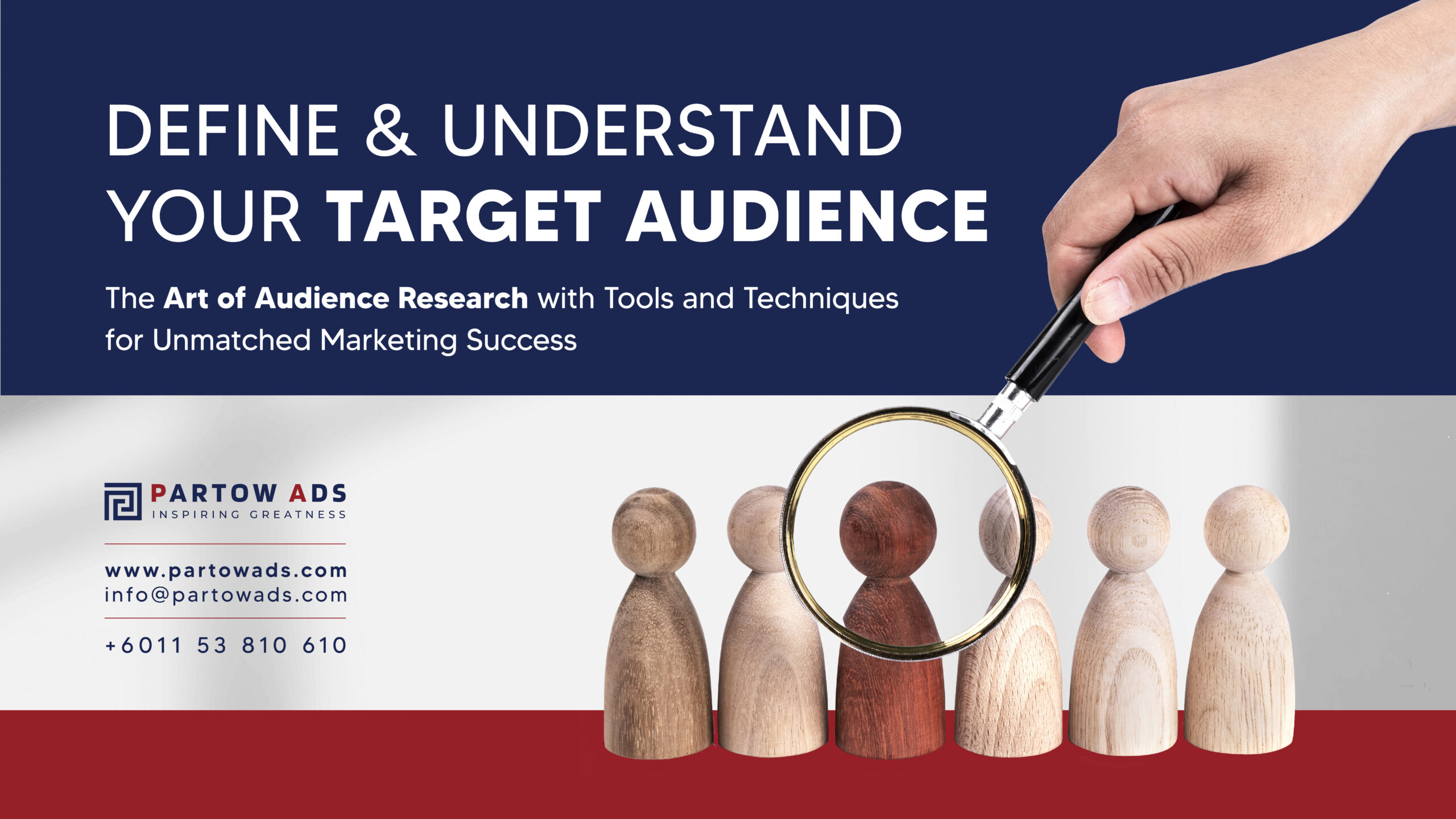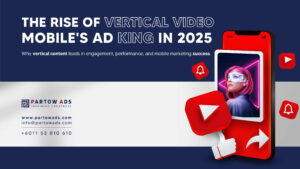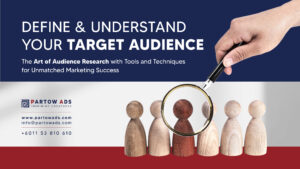
How to define and understand your target audience?
Defining Your Target Audience
Defining your target audience involves identifying the specific group of people who are most likely to be interested in your products or services. This process requires a deep understanding of various demographic, psychographic, and behavioral factors.
1. Demographic Factors Demographics provide a basic snapshot of who your audience is. Key demographic factors include:
- Age: Different age groups have different needs, preferences, and buying behaviors.
- Gender: Gender can influence purchasing decisions, product preferences, and communication styles.
- Location: Geographic location can impact buying behavior due to cultural differences, climate, and local trends.
- Income: Income levels can affect purchasing power and the types of products or services that appeal to your audience.
- Education: Education level can influence product preferences, brand perception, and communication styles.
- Occupation: Occupation can impact purchasing behavior, product needs, and lifestyle choices.
2. Psychographic Factors Psychographics delve deeper into the attitudes, values, and lifestyles of your audience. Key psychographic factors include:
- Personality: Understanding personality traits can help you tailor your messaging and branding to resonate with your audience.
- Values: Values influence purchasing decisions and brand loyalty. Aligning your brand with your audience’s values can foster stronger connections.
- Interests and Hobbies: Knowing what your audience is interested in can help you create content and marketing strategies that capture their attention.
- Lifestyle: Lifestyle factors, such as family status, health consciousness, and leisure activities, can impact buying behavior and product preferences.
3. Behavioral Factors Behavioral factors focus on how your audience interacts with your brand and makes purchasing decisions. Key behavioral factors include:
- Buying Behavior: Understanding how often and why your audience makes purchases can inform your marketing strategies.
- Brand Loyalty: Identifying levels of brand loyalty can help you develop strategies to retain customers and build long-term relationships.
- Usage Rate: Knowing how frequently your audience uses your products or services can inform product development and marketing efforts.
- Benefits Sought: Understanding the specific benefits your audience seeks from your products or services can help you tailor your offerings to meet their needs.
Tools and Techniques for Audience Research
Effective audience research requires a combination of qualitative and quantitative methods. Here are some essential tools and techniques for understanding your target audience:
1. Surveys and Questionnaires Surveys and questionnaires are powerful tools for gathering quantitative data about your audience. They allow you to collect information on demographics, preferences, behaviors, and more. To create effective surveys:
- Keep it concise: Ensure your surveys are short and focused to encourage higher response rates.
- Ask clear, specific questions: Avoid ambiguous or leading questions that could skew your results.
- Offer incentives: Provide incentives, such as discounts or freebies, to motivate respondents to complete your surveys.
2. Interviews Interviews provide in-depth, qualitative insights into your audience’s attitudes, motivations, and experiences. Conducting one-on-one or group interviews can help you uncover valuable information that might not surface in surveys. To conduct effective interviews:
- Prepare open-ended questions: Encourage participants to share detailed responses by asking open-ended questions.
- Create a comfortable environment: Ensure participants feel at ease to promote honest and candid responses.
- Listen actively: Pay attention to verbal and non-verbal cues, and ask follow-up questions to delve deeper into participants’ answers.
3. Focus Groups Focus groups bring together a small group of individuals to discuss specific topics related to your brand, products, or services. They provide a dynamic environment for gathering qualitative insights and observing group dynamics. To run successful focus groups:
- Select a diverse group: Include participants from different backgrounds to gather a range of perspectives.
- Facilitate the discussion: Guide the conversation to ensure all participants have the opportunity to share their thoughts.
- Analyze group interactions: Pay attention to how participants interact and influence each other, as this can reveal deeper insights.
4. Social Media Listening Social media platforms are treasure troves of information about your audience’s preferences, behaviors, and opinions. Social media listening involves monitoring and analyzing social media conversations to gain insights into your audience. To leverage social media listening:
- Use social listening tools: Tools like Hootsuite, Sprout Social, and Brandwatch can help you track mentions, hashtags, and keywords related to your brand.
- Analyze sentiment: Assess the tone and sentiment of social media conversations to understand how your audience feels about your brand and industry.
- Identify trends: Look for recurring themes and trends in social media discussions to stay ahead of your audience’s evolving needs and preferences.
5. Website Analytics Website analytics provide valuable quantitative data about your audience’s behavior on your website. Tools like Google Analytics can help you track metrics such as page views, bounce rates, and conversion rates. To make the most of website analytics:
- Set up goals and funnels: Define specific goals and conversion funnels to track key actions on your website.
- Analyze user behavior: Use heatmaps, session recordings, and user flow reports to understand how visitors navigate your site.
- Segment your audience: Break down your analytics data by demographics, location, and behavior to identify patterns and trends.
6. Customer Feedback Customer feedback is a direct and valuable source of information about your audience’s experiences and expectations. Collecting and analyzing feedback can help you identify areas for improvement and uncover new opportunities. To gather customer feedback:
- Use feedback forms: Incorporate feedback forms on your website, emails, and after-purchase communications to capture insights.
- Encourage reviews and testimonials: Request reviews and testimonials from satisfied customers to gain positive feedback and social proof.
- Respond and engage: Show your audience that you value their feedback by responding to comments and addressing any concerns or suggestions.
Developing Audience Personas
Once you’ve gathered sufficient data about your audience, the next step is to develop audience personas. Personas are fictional representations of your ideal customers based on the insights you’ve collected. They help you humanize your audience and tailor your marketing efforts more effectively.
1. Creating Personas To create detailed personas, follow these steps:
- Compile your data: Organize the information you’ve gathered from surveys, interviews, focus groups, and other research methods.
- Identify common characteristics: Look for patterns and common characteristics among your audience segments.
- Define your personas: Create detailed profiles for each persona, including demographics, psychographics, behaviors, and goals.
2. Utilizing Personas Personas are valuable tools for guiding your marketing strategies and decision-making processes. Here’s how to use them effectively:
- Content creation: Tailor your content to address the needs, interests, and pain points of your personas.
- Marketing campaigns: Design targeted marketing campaigns that resonate with each persona’s preferences and behaviors.
- Product development: Use personas to inform your product development process, ensuring your offerings align with your audience’s needs.
- Customer journey mapping: Map out the customer journey for each persona to identify touchpoints and optimize the user experience.
Case Studies: Successful Audience Understanding
1. Nike Nike’s success can be attributed in part to its deep understanding of its target audience. By identifying the aspirations and motivations of athletes and fitness enthusiasts, Nike has created powerful marketing campaigns that resonate with its audience. The “Just Do It” campaign, for example, taps into the mindset of determination and perseverance, inspiring individuals to push their limits.
2. Spotify Spotify’s personalized approach to music streaming has set it apart from competitors. By analyzing user data and preferences, Spotify curates personalized playlists and recommendations that keep users engaged and satisfied. The “Discover Weekly” playlist, which offers a tailored selection of new music each week, has become a beloved feature for many users.
3. Airbnb Airbnb’s success lies in its ability to understand the desires and preferences of modern travelers. By recognizing the demand for unique, authentic travel experiences, Airbnb has built a platform that connects travelers with local hosts. Their “Live There” campaign emphasizes the value of immersing oneself in a destination, resonating with travelers seeking more than just a place to stay.
Conclusion
Understanding your target audience is a fundamental aspect of any successful marketing strategy. By defining your audience, conducting thorough research, and utilizing the right tools, you can gain valuable insights that drive personalized marketing efforts, improve customer experiences, and enhance overall business performance. Implement these strategies and watch your brand flourish as you connect with your audience on a deeper, more meaningful level.
Categorise
Tags
#advertising (11) #advertising-agency (6) #advertising-strategies (4) Branding (7) digital marketing (7) email marketing (1) Marketing (8) partow ads (3) Strategies (2) YouTube Shorts (1)
Recent Posts
- How to Turn Advertising into Sales: A Practical Guide for Businesses

- Story First: How Narrative Drives Memorable Branding in 2025?

- The Rise of Vertical Video: Mobile’s Advertising King in 2025!

- 6 Branding Mistakes Small Businesses Make and How to Fix Them Fast for Better Visibility and Growth

- Mastering the Art of Audience Research with Tools and Techniques for Unmatched Marketing Success




